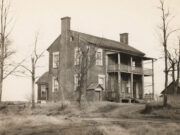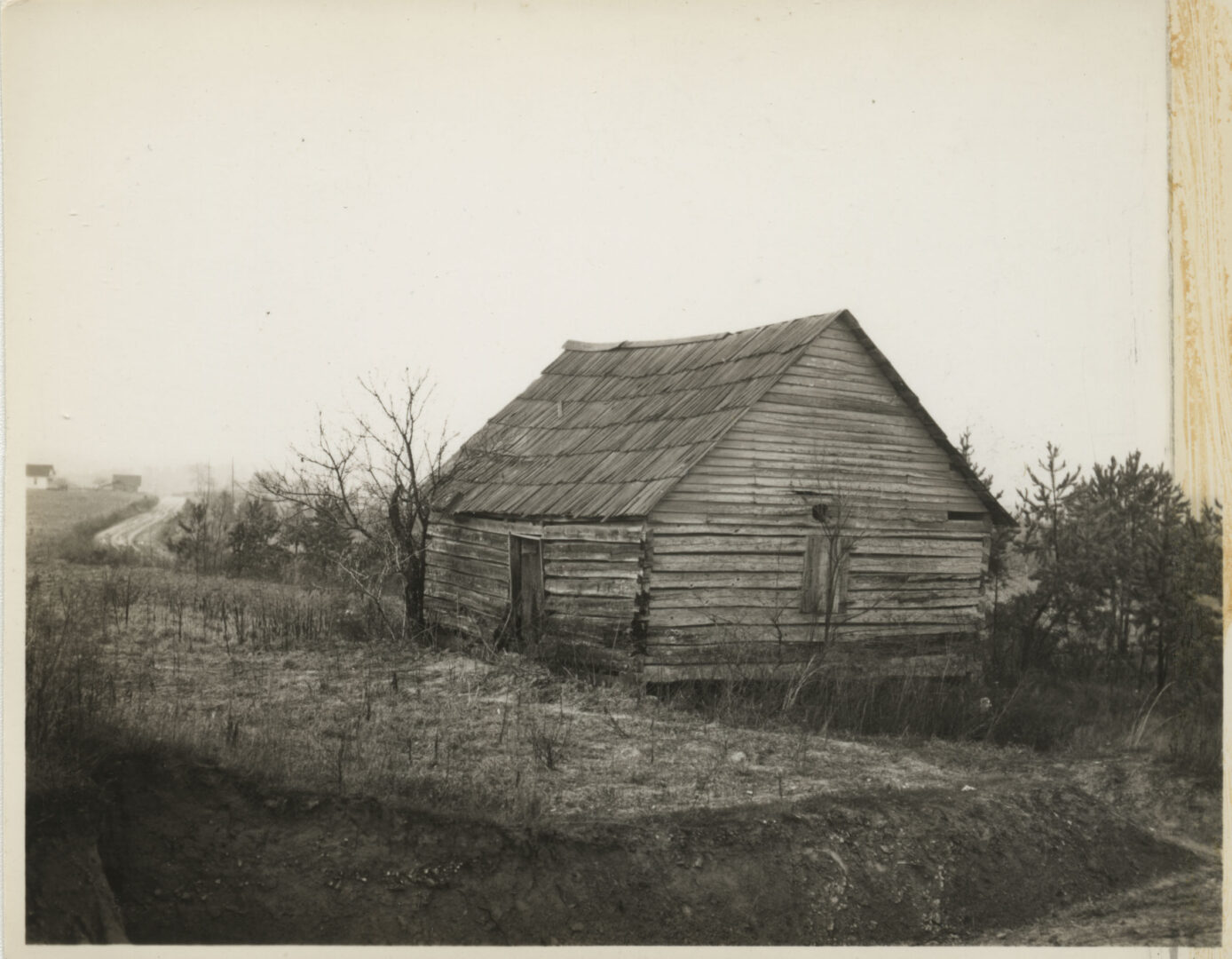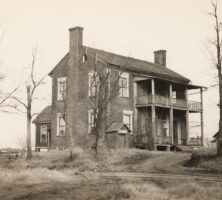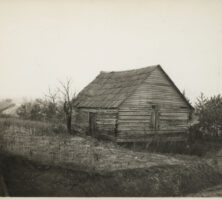The history of Georgia’s Indian missions (1735-1838) is a story of war, politics, assimilation, and displacement—a reflection of national and international events taking place near as well as far from mission premises. The spiritual element of the missions paled in the light of circumstances beyond the control of Georgia Indians and missionaries. All mission work came to a close in Georgia by the mid-1830s, as the removal of Southeastern Indians became inevitable.
Conversion and Civilization
Missions and missionaries to Georgia’s Native Americans, namely the peoples of the Creek and Cherokee nations, is a history dominated not only by Euro-American wars and politics but also by the Indians’ determined control over their own destinies. Through mutual invitations issued by non-Indian and Indian governments Moravians, Congregationalists (sometimes known as Presbyterians), Baptists, and Methodists lived among Georgia’s indigenous tribes to teach them the “arts of civilization” and convert them to Christianity. With conversion and the teaching of other useful “civilizing” skills such as weaving, sewing, and European farming techniques, missionaries reasoned that they could change Indians into “whites.” Before true assimilation could take place, Anglo society believed Indians needed to resemble white America and to become accountable and predictable.
Indians looked to these religious groups as tools to aid them in negotiating with the white world. A prevailing concern among Indians was the fear of being cheated and knowing, in fact, that that was the reality. The Indians reasoned that by learning the white man’s language, they could control the trade more effectively, live peacefully with frontier whites, and perhaps even deter white settlement.
But the indigenous peoples were caught between opposite American powers working simultaneously; one was to create “Anglo” Indians, and the other was to remove all Indians. Therefore, the missionaries’ tasks as “bringers of civilization” were greatly hampered due to forces beyond their control. Between the years 1733, when the reformer General James Oglethorpe founded the colony of Georgia, and 1838, the time of the Cherokees’ coerced removal to Indian Territory (present-day Oklahoma), Georgia’s Indian missions bore the brunt of Anglo encroachment on Native American land and resources, as cotton production and plantation slavery expanded south and southwestward.
Moravian Missions
War played a major role in the ousting of the first mission. In 1735 the Unity of the Brethren, commonly called Moravians in the New World, was the first group to establish a mission in the newly formed British colony. In an effort to escape the persecution and oppression in central Europe for their stances on pacifism and separation of church and state, they came to British North America expressly to evangelize Native Americans. Moravian missionaries Brother Peter Rose and his wife, Sister Catherine, founded Irene, a spiritual outpost about a mile from Savannah. Irene lasted until January 1739, when war clouds began to gather as England and Spain commenced hostilities, and the War of Jenkins’ Ear (1739-43) ensued. Since the Moravians refused to bear arms, Georgia officials forced them to leave the colony in 1740. They went to Pennsylvania, where they eventually founded Bethlehem and ministered to Indians in the middle colonies.
In 1753 a group of Moravians in Wachovia, the region surrounding Winston-Salem, North Carolina, made religious forays into the Cherokee Nation, which was then located in the Appalachian Mountains of the Carolinas, Georgia, Alabama, and Tennessee. During the Revolutionary era, they failed to establish a mission enterprise.
By the 1790s, however, as war subsided in the new republic, U.S. policymakers, beginning with George Washington, encouraged Christian missions. At this time most of the Cherokees and some Creeks resided in Georgia. The Cherokees particularly, and the Creeks to a certain extent, were amenable to such missions for the purpose of teaching English and other useful “civilization” arts but were unfriendly toward Christianity.
Flint River Mission
In 1804 Indian agent Benjamin Hawkins and a few Creek leaders proposed to the Salem Moravians the establishment of a mission at the old Indian agency, Fort Lawrence, just west of the Flint River, near Reynolds. Both Hawkins and the Creeks opposed the teaching of Christianity but agreed that they should become acquainted with craftsmen’s skills and English. Acquiescing to their demands, the Moravians in 1807 sent Christian Burkhardt, a weaver, and Karsten Petersen, a turner, joiner, and gunsmith, to the Creek Nation.
While teaching the “arts of civilization,” the Brethren also taught the Gospel, taking extended forays beyond the Chattahoochee River into Alabama, where more Creeks lived. The Moravians were unsuccessful on all fronts; the Creeks and Hawkins disliked the pietistic religion. The mission closed in August 1813, after Creeks attacked Fort Mims (above Mobile on the Alabama River), and warlike hostilities developed. Burkhardt and Petersen returned to North Carolina. The War of 1812 prevented further evangelization.
As part of the War of 1812 General Andrew Jackson campaigned against the Creek Red Sticks, which brought about the Creek Civil War of 1813-14. The fragmentation of the Creek Nation and the consequent loss of 23 million acres of land left the Creeks with little hope in a future with Anglo values. By 1825 Georgia and U.S. officials had coerced most Creeks to leave the state, while some joined other Creeks in Alabama. In the 1820s the Baptists and Methodists established missions in Alabama before Creek removal to Indian Territory in the 1830s. Facing dangers on all sides, the Cherokees embarked on a course to expand their worldview to include Western virtues. Missionaries were vital to such efforts.
Spring Place and Oothcaloga Missions
In 1801, at the invitation of Cherokee leaders, the Salem Moravians established Spring Place Mission in northwest Georgia, near Chatsworth. As a nonacquisitive people, they held the longest tenure of any missionary society in the Cherokee Nation before Cherokee displacement in 1838. Their most notable missionaries were Brother John Gambold, a minister and hat maker by profession, and Sister Anna Rosina Gambold, a botanist and former headmistress of the Bethlehem Female Seminary. They served the Spring Place Mission from 1805 to 1821, the year Anna Rosina died.
Spring Place, a site along the Federal Road connecting Augusta with Nashville, Tennessee, was a center for hospitality (a feature of the Cherokee ethic also), and Moravians welcomed visitors from all parts of the Cherokee Nation and the United States. For the Cherokee youth to receive the full benefit of the mission’s educational goal, most of them roomed and boarded at Spring Place. The mission housed some 114 Cherokee children from 1804 to 1833, when Georgia citizens forced its closing.
During those vibrant years some of its students were the offspring of Cherokee leaders, who believed that the best way for the Cherokees to preserve their independent homeland was to create an educated elite who could lead the efforts of the Cherokee Nation to resist the persistent encroachment on their lands and resources. David Watie’s two sons, Buck and Stand Watie, and Major Ridge’s son, John Ridge, were well served by Moravian education, as they became leaders of the Cherokees in the 1820s after attending Cornwall, the American Board of Commissioners for Foreign Missions (ABCFM) school for higher learning in Connecticut.
John Ridge also lent his expertise in English to the Creeks as secretary, writing talks for Chief Opothle Yoholo, and as a representative of Cherokee interests in Washington. Buck, who changed his name to Elias Boudinot, became editor of the Nation’s bilingual newspaper, the Cherokee Phoenix. Both men maintained close ties to the Moravian missionaries.
The Moravians also influenced Cherokees in spiritual matters. By 1830 the Moravians had converted some forty persons, including Second Principal Chief Charles Hicks and his niece Margaret Ann Scott Vann Crutchfield, the widow of the infamous James Vann of Diamond Hill Plantation, located north of the mission.
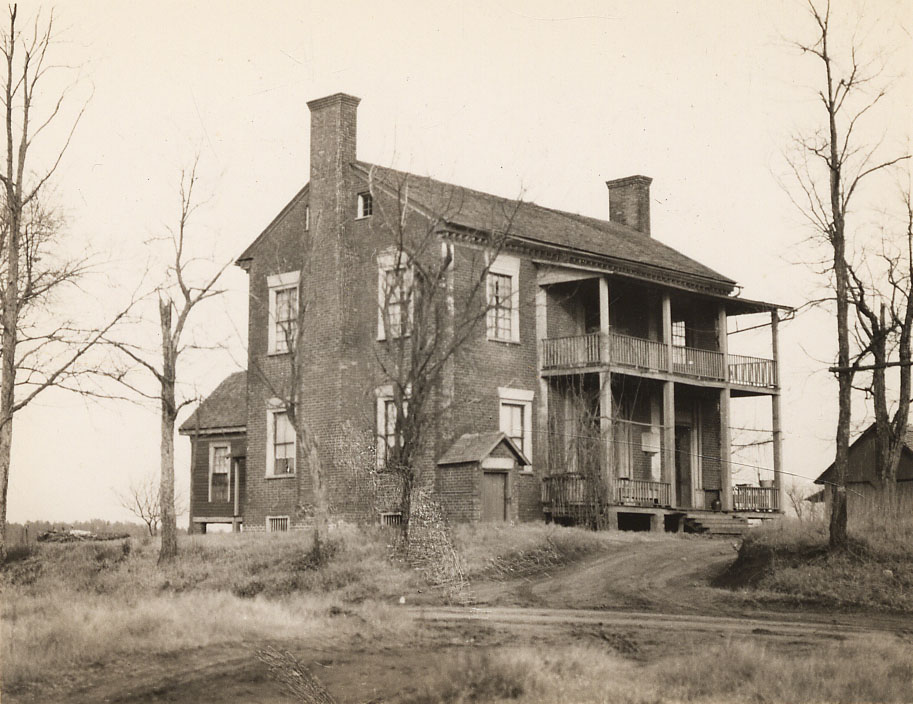
The success of the Spring Place Mission led to the founding of the Oothcaloga Mission, about thirty miles to the south in the vicinity of present-day Calhoun. John Gambold served there from 1822 until his death in 1827. That same year Henry Gottlieb Clauder went to Oothcaloga and stayed until the 1830s, when the Moravians turned the enterprise over to Indian assistants.
Generally, the accomplishments of the Moravians lay in the fact that their missions not only opened their doors to all visitors, including enslaved Africans from nearby Cherokee plantations, but also functioned as model farms for European agricultural techniques. Particularly, the Spring Place Mission served as an exemplar for other missionary enterprises to emulate.
Presbyterian Missions
The Congregationalists of the ABCFM were known as Presbyterians in Georgia. Their missionaries joined the Union Presbytery of Eastern Tennessee, which legally lent them recognition in Georgia. In 1817 the ABCFM founded Brainerd (near Chattanooga, Tennessee), their central station, and they also established other missions throughout Georgia. These missions maintained day schools at Pumpkin Vine; Etowah, or Hightower (south of Cartersville and across the river from the Etowah Mounds); Haweis, or Turnip Mountain (twenty miles west of Rome); the Cherokee capital, New Echota (Calhoun); and Taloney, or Carmel (thirty miles southeast of Spring Place on the Ellijay Road and Talking Rock Creek). Mission churches were founded at a few sites, but it was the mission schools, which taught an average of twenty to thirty students annually to 1833, that primarily influenced the Cherokees. The Reverend Samuel A. Worcester served New Echota and began a translation of the Bible into Cherokee. His most notable Cherokee patron was Elias Boudinot. The Reverend Elizur Butler and the Reverend Joseph B. Adams ministered at Haweis; the Reverend John Thompson, the Reverend Daniel Sabin Butrick (who accompanied the Cherokees on the Trail of Tears), and the Reverend Isaac Proctor assisted at Etowah or Hightower. John Beamer, an Etowah chief, was a convert.
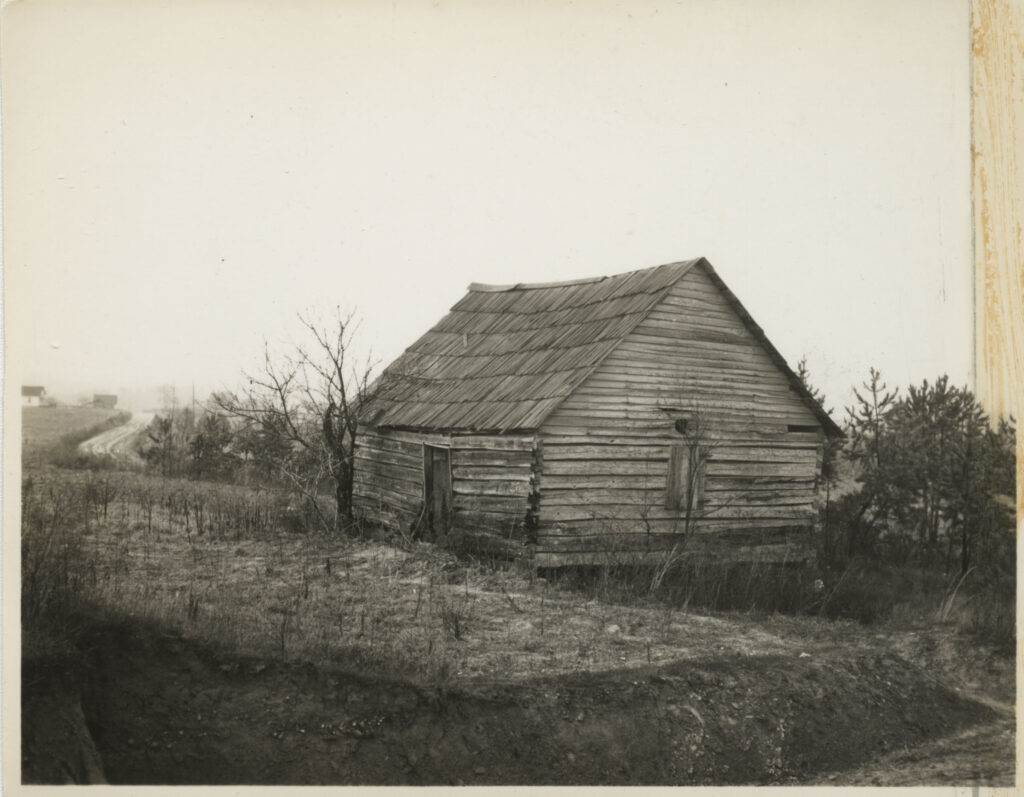
Baptist Missions
Generally, Presbyterians and Moravians had few converts because of their Calvinistic doctrine. Even though Baptists had similar policies, they gained more converts. The most successful Cherokee Baptist mission was located in Valley Towns, North Carolina, and run by the Reverend Evan Jonesand his son, the Reverend John Jones. Meanwhile, the Sarepta Baptist Missionary Society of Georgia hired William Standidge, who in 1821 established a day school and church at Tinsawattee on the Etowah River, near Gainesville. Standidge was relieved in 1824 by the Reverend Duncan O’Briant, who taught an average of twenty students a year until 1829, when the school moved to Hickory Log, eight miles to the south on the same river. Facing constant harassment, O’Briant and his Cherokee followers left the Nation in 1831 for the Arkansas River in Indian Territory.
By 1830 the Tinsawattee church had thirty-one members. The Baptists put their converts at ease with the use of total immersion, a ceremony similar to the Cherokees’ purification rite. “Going to Water” won converts and made sense to the Cherokees. However, it was the Methodists who had the most success among the Georgia Cherokees.
Methodist Missions
With their uneducated but caring circuit riders and their “four-day” or protracted camp meetings that resembled Cherokee all-night dances and extended camping, Methodists converted more Cherokees than all the other denominations combined. Their Arminian approach minimized atonement and the recognition of saints. Salvation was an open door, and sinners had free wills. In 1823 the first circuit riders were appointed in Tennessee near the site of John Ross’s home, south of Chattanooga. Their emphasis was not on model farms and boarding schools but rather on itinerant and emotional ministry.
However, the Methodists, yielding to Cherokee wishes, did open six-month day schools at Oothcaloga and Pinelog, along with semipermanent churches: barely literate but enthusiastic, the main ministers were Richard Neely, Nicholas D. Scales, Dickson C. McLeod, and James J. Trott, all of whom married Cherokee women. Within four years Methodists accepted Cherokees as licensed preachers and traveling exhorters, among whom were Young Wolf, Turtle Fields, John Spears, William McIntosh, and John Fletcher Boot. In 1829 Methodism achieved a milestone when the church admitted the Ross brothers, John and Lewis, as members; the former had a home at New Echota. By 1830 Methodists had claimed more than 1,000 members.
Indian Removal
Under the administration of U.S. president Andrew Jackson, who had campaigned for the removal of all Southeastern Indians as part of his platform, the Indian removal bill became a reality in 1830. In addition, between 1831 and 1833, the Georgia legislature confiscated and placed all Cherokee lands into a lottery, whereby Georgia citizens registered for a chance to win a part of the divided property.
The missionaries at Spring Place were ousted on January 1, 1833. The Moravian Clauder, the Methodists Trott and McLeod, and the Presbyterians Butler and Worcester all went to jail for refusing to swear allegiance to the state. After 1832 the mission boards that sponsored these various groups lost hope in the survival of Georgia’s Cherokee missions in general and saw removal as the way for the Indians to survive as a people. Consequently, most Cherokees viewed missionaries as pro-removal advocates, even though a few stood by their anti-removal stance. Many missionaries believed that Cherokees should bargain for all the money they could get from the federal government before involuntary removal became a fact. Therefore missionaries became unwittingly associated with the Treaty Party or the Ridge faction, led by John Ridge, Major Ridge, Elias Boudinot, and Stand Watie. Only Trott, Jones, and Butrick held hope for the Cherokees’ retaining their ancestral domain.
Cherokee converts to Christianity were few because its missionaries represented both a people and government intent on coerced removal. Only after these tense times, and only in the Indian Territory of Oklahoma, did the Baptist faith attract former Georgia Indians.


